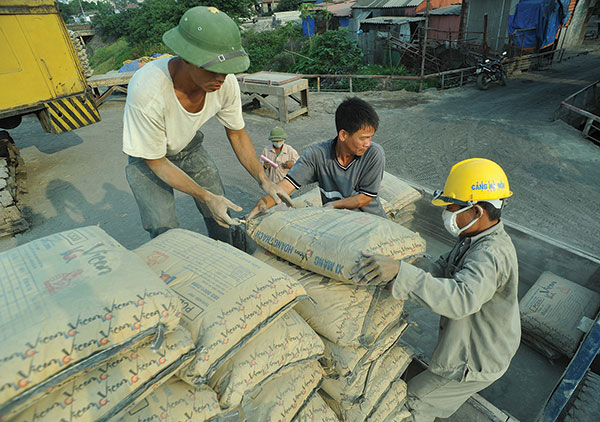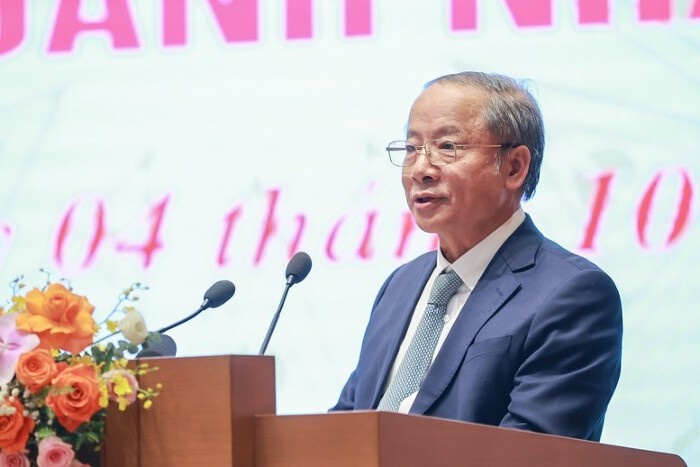Cement makers fail in energy-saving drive

Cement makers will largely miss the deadline to install energy saving equipment
Under Vietnam’s cement industry development plan until 2020 with a vision towards 2030, all cement plants having capacity of equal or more than 2,500 tonnes of clinker per day have to apply the waste heat gas generator system (WHGG) to save at least 20 per cent of their electricity consumption by 2015.
“Except for Holcim and Ha Tien 2, we have not seen any cement plants investing in the system at the moment. Most of cement plants are facing financial difficulties due to high debt and weak domestic demand, so they can’t invest in the system by themselves,” according to Stockplus financial media corporation’s release last year.
“We believe that there will be an extension from the Vietnamese government in relation to compliance on the matter,” said Nguyen Quang Thuan, Stockplus’ CEO.
Nguyen Quang Cung, chairman of the Vietnam Cement Association admitted to the delayed investment in the WHGG. “However, there won’t be an extension. The cement makers will be forced to implement this on time,” he said.
Nguyen Cong Minh Bao, director of Sustainable Development of Holcim Vietnam, which invested $18 million in a WHGG in 2012, said Vietnam should not extend the deadline. According to Bao, currently, 60 per cent of Chinese firms apply the system in China and the WHGG is an intrinsic component of a new project.
Holcim Vietnam’s WHGG has an output capacity of 44 million kWh per year. It will be enough to serve the firm’s Hon Chong Cement Factory for 88 days of operation, meaning Holcim Vietnam will save 9,000 tonnes of coal and reduce 25,300 tonnes of carbon dioxide gas per year.
Vietnam’s cement sector is considered as one of the country’s most energy intensive industries. Under the third draft of the retail pricing scheme conducted by the state-run Electricity of Vietnam (EVN) last year, steel and cement producers using power voltages of 110kV or higher during peak hour would pay 10 per cent more than the asking price for their normal power. Overall, the draft would dish out a power tariff hike of 2-16 per cent to steel and cement producers.
Vietnam oversupplied 8-12 million tonnes of cement every year during 2010- 2012. The oversupply was due to a mushrooming in the number of cement manufacturing plants in recent years. At present, Vietnam has 106 cement factories with total annual output capacity of 63 million tonnes of cement.
The Ministry of Construction estimated the domestic cement consumption would reach 62-63 million tonnes this year, a mere1.5-3 per cent increase in comparison with 2013. It is expected that Vietnam would export 14 million tonnes of cement this year, equal to last year.
What the stars mean:
★ Poor ★ ★ Promising ★★★ Good ★★★★ Very good ★★★★★ Exceptional
Latest News
More News
- Connections being improved for supporting industries (October 04, 2024 | 16:00)
- Brewer seeks to snap up new stakes (October 04, 2024 | 15:00)
- Foreign investors step up M&A activities in Vietnam (October 04, 2024 | 14:38)
- Hung Yen bolsters competitiveness to drive socioeconomic development (October 04, 2024 | 10:35)
- Vietnam reports FDI jump of 11.6 per cent (October 04, 2024 | 10:18)
- Vietnam to become a country of origin of innovation (October 02, 2024 | 13:22)
- Hai Duong expects to make investment breakthrough (October 01, 2024 | 18:00)
- Manufacturing production suffers after Typhoon Yagi (October 01, 2024 | 17:11)
- Long Son Petrochemicals complex put into commercial operation (October 01, 2024 | 16:55)
- China seeks favourable conditions to expand automotive investments in Vietnam (October 01, 2024 | 16:39)

















 Mobile Version
Mobile Version